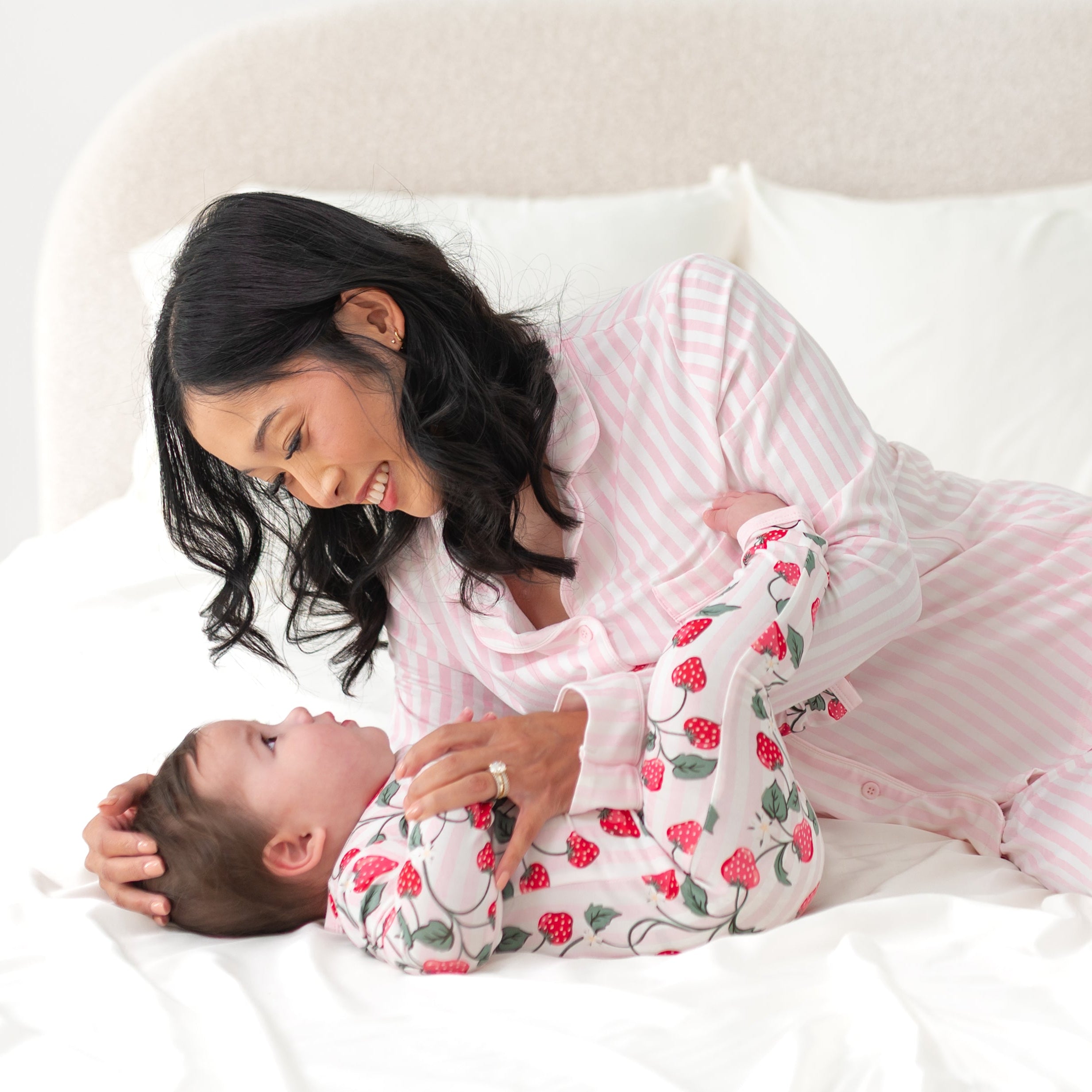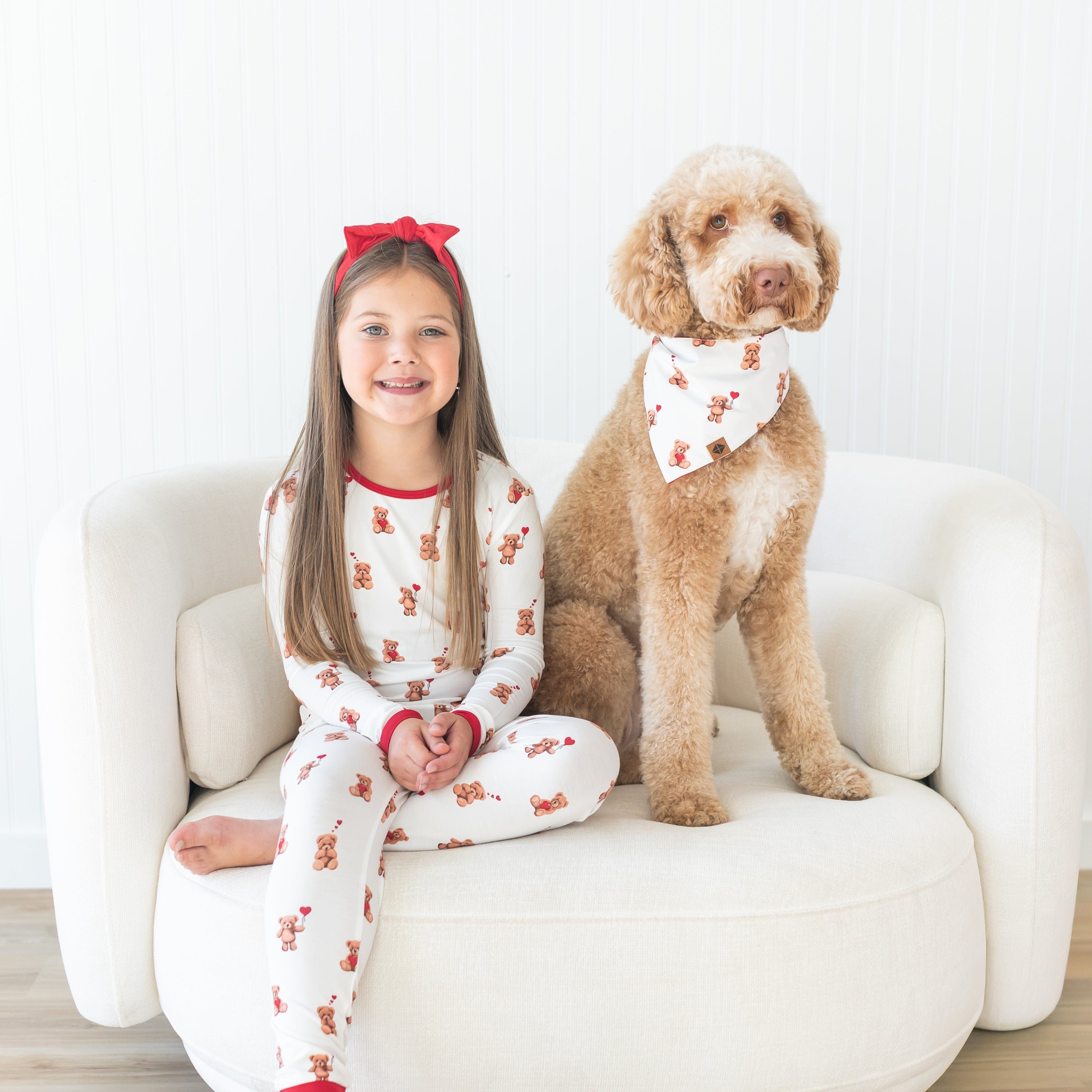Looking at your newborn baby, it may hurt your brain to imagine all of the changes he has gone through over the past nine months. During that time he went from two separate cells to this living, breathing, although seemingly endless sleeping little thing. While that transformation is utterly amazing, you’d better hold on tight for what the next six months has in store. He’s going to pull off his ‘always napping pants’ and put on some that will have him babbling, rolling, and possibly scooting his way all over your heart. Read on to learn more about important developmental milestones of the first six months and how you can help your baby achieve those.
The First Month Milestones
This first month will be crazy and possibly hard for you to remember. There’s going to be a lot of uncertainty as you and your baby try to figure each other out. Look to experience feeding and sleeping issues, but also plenty of bonding and enjoyment of each other.
During that first month, it may seem like your baby is always asleep, or if she is awake it’s only to eat. That’s all perfectly natural, but when she’s awake look for her to move her arms and legs in small, jerky motions and move her head from side to side when supported. Most of her movement relies on reflexes so don’t be surprised if she startles easily and make sure you get the most out of that grasping reflex and let her hold your finger often. She will also try to focus on objects within about 12 inches of her eyes, so make sure you get your face in close when you sing or talk to her.
Tummy time is a must to help strengthen those all important neck and back muscles. Have her do her tummy workouts for five minutes several times a day. Play or sing to her for encouragement and talk and smile to her often. It’s never too early to start reading. While she won’t get much out of the story, it will help her recognize your voice and contrasting pictures will help her eyesight development
Month Number Two
Hopefully by the second month, you and baby have developed sort of a routine. He will still be sleeping often, hopefully for longer stretches during the night. He should start spending a little more time awake and be wanting to do other things besides just eat. Muscle movements should start to smooth out a little, but he will still retain those reflexive actions. He should also start to unclench those tiny fists and uncurl those little sausage toes. Some babies will start to try to lift their head, though they won’t have good control of it so continue to provide support. Keep up the tummy time! You can start to increase tummy sessions to 5-10 minutes if he’ll go for it.
By the second month, you should start to hear other sounds out of his mouth besides just crying and some of those sounds may be in reaction to seeing you or someone else he knows. He may start to recognize faces at this point too, so make sure to always wear a smile to help keep him calm and feeling safe. You can further help with eyesight development by moving a toy back and forth close to his face and having him follow it with his eyes.
Your Three-Month-Old Babe
If she hasn’t been already, smiling should be a big milestone for the third month. Chances are you will have no trouble helping her practice that one! Her muscle strength is going to be wowing you too. Most babies raise their head and shoulders off of the floor and support their upper body with their arms at this point. She may be working at trying to roll but might not quite have the mechanics down yet. Her movements will be smooth and deliberate now as she should be able to bring her hands to her mouth (time to make sure the floor is clean!) and she can grasp objects when you give them to her. Tummy time is still her best friend, but you may need to get creative to keep her entertained.
Expect new and different noises to be emerging from her mouth. She may even try to mimic your single syllable sounds and facial expressions. Keep up the singing and talking to her as well as getting her to track objects with her eyes. Dangling the toy in front of her at this point will not only help her eyesight development but will encourage her to reach and try to grab for things as well.
Four Months Old!
Look out! By four months, many babies have mastered rolling onto their side or even from tummy to back or vise versa. This means they will no longer stay where you put them, so supervision is a must! He will start gaining control of that head but still be on the lookout for the occasional wobble. He will also start to see how his hands can work together to hold an object. Some babies will find this out with their feet as well. He may practice sitting in a nursing pillow or other fully surrounding seat for support. You guessed it, tummy time is still a big part of his day. Tummy time will encourage rolling as well as continue to strengthen the upper body and neck muscles. You can also help him by encouraging him to reach for objects in close proximity to his face and to support him so he can ‘stand’ on his own two feet.
By four months old, your house may be filled with baby laughter. While something might not seem funny to you, he’ll experiment with laughing at almost anything. Try making funny faces or using funny voices at him to get a deep belly giggle. He may also start throwing some real sounds into his babble, most commonly ‘b’, ‘d’, and ‘m’. Keep talking to him. Some moms like to live their day out loud. Narrate what you’re doing, especially if he’s watching you and be sure to keep up the singing and smiling!
Month Number Five
Babies this age are going to want to move. Rolling over should be a thing of the past as most babies are starting to work on rocking and wiggling to get around a bit. She will also discover her toes and fingers and be passing things between her hands and to her mouth. If you don’t have a pair of rattle socks, now would be the time. Rattle socks help develop that hand-eye coordination as she tries to reach that funny, noisy face on the tips of her toes. You’re likely to get some great laughter from her with rattle socks as well. Keep working on the supported sitting as she’ll start to get more core strength.
Emotions may start to run high as she learns to express herself. She’ll soon find out to cry when she needs something and to giggle, coo, and babble when the seas are fair. She’s also getting fairly good at recognizing people at this point and may shy away from those that she doesn’t know. Be sure to talk back to her when she’s babbling. You can repeat what she ‘says’ or pretend to have a conversation, whatever engages her best.
Halfway to a Year!
Well that happened quickly! How different your baby has become in these last six months. He may be ready to sit unsupported. A new favorite activity may be to bounce up and down when you support his body and he may be desperately trying to get up on all fours or to army crawl around the house. It won’t be long until he’s seriously on the move! I would tell you to encourage him to practice these movements, but chances are he doesn’t need much encouragement. You may notice some disruption in his sleep during this time as he’ll want to practice at all hours. Also, solid foods! Make sure you introduce a variety of foods to your baby but allow time to determine any food sensitivities. Foods needs to be finely pureed to prevent choking. Watch out for some funny faces as you start this process!
While his movement is increasing, so is his curiosity. He’ll constantly be on the lookout for new objects and sounds. Be sure to call him by name as most babies will respond to it by six months. He also may be getting creative with his speech and stringing different sounds together such as ‘ba-da’ or trying to copy you. Keep up the singing and chatting with him especially during playtime. Reading books with simple words and sounds will also up his vocabulary.
As you look back over the last six months, your memory is sure to be filled with lots of smiles, love, and contentment. There is probably also some tiredness and uncertainty. All babies develop at different rates. Some may be rolling at two months and crawling by six while others may take until five and 10 months to do those things. If you ever have any questions or concern about your baby’s development, be sure to check with his health care provider for further evaluation. Here’s to the next six wonderful months!




















